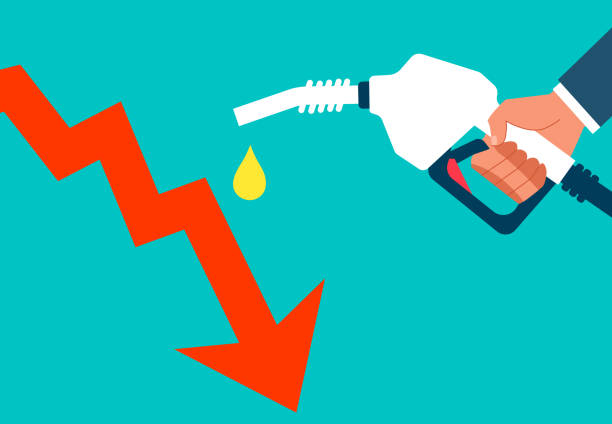
What Does the Sudden Drop in Petrol Prices Mean for Pakistan?
October 14, 2025 — Lahore: In a much-welcomed development, the Government of Pakistan has announced a Rs. 5.66 per litre reduction in petrol prices for the next fortnight. This move comes as a relief to millions of motorists and businesses already grappling with inflation and high transport costs.
👉 Read the official announcement on PakWheels
The New Prices (Effective October 16, 2025)
According to a notification issued by the Finance Division, petrol prices have been cut by Rs. 5.66, while high-speed diesel (HSD) has seen a Rs. 8.42 reduction. The new rates are as follows:
| Fuel Type | Old Price (Rs./litre) | New Price (Rs./litre) | Change |
| Petrol | 268.68 | 263.02 | -5.66 |
| High-Speed Diesel | 276.81 | 275.41 | -1.39 |
(Source: Finance Division, Government of Pakistan)
Why Did Petrol Prices Drop in Pakistan?
Pakistan’s latest petrol price cut comes on the back of a major shift in global oil markets.
International crude oil prices have slipped to around $61.9 per barrel — a five-month low — following a combination of global supply concerns and slower economic activity.
According to Reuters and the U.S. Energy Information Administration (EIA), prices eased this week amid:
- Ongoing U.S.–China trade tensions are dampening demand.
- The International Energy Agency’s (IEA) projection of a supply surplus by 2026 puts additional downward pressure on prices.
Global Oil Prices Are Cooling
As reported by OilPrice.com, Brent crude has been declining for several weeks due to:
- Slowing global demand across Asia and Europe.
- Easing geopolitical tensions in major oil-producing regions.
- Increased production from OPEC+ members has expanded supply.
With Brent now trading between $60 and $70 per barrel, Pakistan has been able to transfer part of the benefit to local consumers, reversing the inflationary trend seen earlier this year.
Rupee Stability Has Also Helped
The USD → PKR rate is currently around Rs 281.4 per USD (mid-October 2025), according to Wise.
The currency has shown minimal daily fluctuations, indicating a relatively calm phase.
Other reports support this trend:
- In April 2025, the rupee “remained stable” near Rs 280.47/USD, according to DollarEast.
- A CompareRemit analysis found that over the past 30 days, the rate has moved only between Rs 279.65 and Rs 280.25, suggesting low volatility.
So, while the rupee hasn’t been appreciating aggressively, it has also avoided sharp devaluations in recent weeks — a period of relative stability.
This period of stability has helped reduce the landed cost of imported fuel. Interbank data from the State Bank of Pakistan (SBP) shows that a stable rupee directly cushions fuel import payments — a key factor behind OGRA’s decision to revise prices downward.
In simpler terms, a combination of global market ease and a stable exchange rate results in temporary domestic price relief.
Sigh of Relief for Drivers and Businesses
The reduction will lower transportation and logistics costs, offering minor relief for goods transporters and daily commuters. However, experts warn that the effect may be short-lived if oil prices rebound globally.
- For private car owners, especially daily commuters using petrol-driven vehicles like the Suzuki Alto or Toyota Yaris, this drop could save around Rs. 250–400 per refill, depending on tank size.
- Public transport fares, however, are unlikely to fall immediately, as operators often adjust fares more slowly than price changes.
Economic Implications
While the recent petrol price cut provides short-term relief to consumers, economists caution that it’s unlikely to curb overall inflation unless the downward trend in global oil prices continues for several months.
According to the State Bank of Pakistan’s latest monetary policy outlook, fuel costs remain one of the key contributors to inflation in the country. The SBP highlighted that although energy prices were lower year-on-year, recent adjustments in motor fuel prices and electricity tariffs could push energy inflation higher in the coming months.
It also warned that additional increases may follow due to gas tariff revisions and the rollback of temporary electricity subsidies in FY25’s final quarter.
Still, the fuel price relief may offer temporary breathing room to both consumers and businesses, while also helping the government retain public goodwill amid tight IMF-backed fiscal measures and rising living costs.
Will Prices Stay Low?
Unlikely — at least not for long.
Experts from Bloomberg Energy predict oil prices could rebound as winter demand rises in Europe and Asia. A stronger dollar or supply cuts from OPEC+ can also reverse this downward trend quickly.
In short:
“This drop offers short-term relief, but Pakistan remains vulnerable to global oil shocks due to heavy import dependency.”
What to Expect Next
- Fuel price revisions will continue biweekly under the new mechanism by the Oil and Gas Regulatory Authority (OGRA).
- Consumers should expect fluctuating prices depending on the international oil market, rupee movement, and local taxation policies.
Stay tuned to PakWheels News for the latest fuel price updates and economic insights.


Comments are closed.